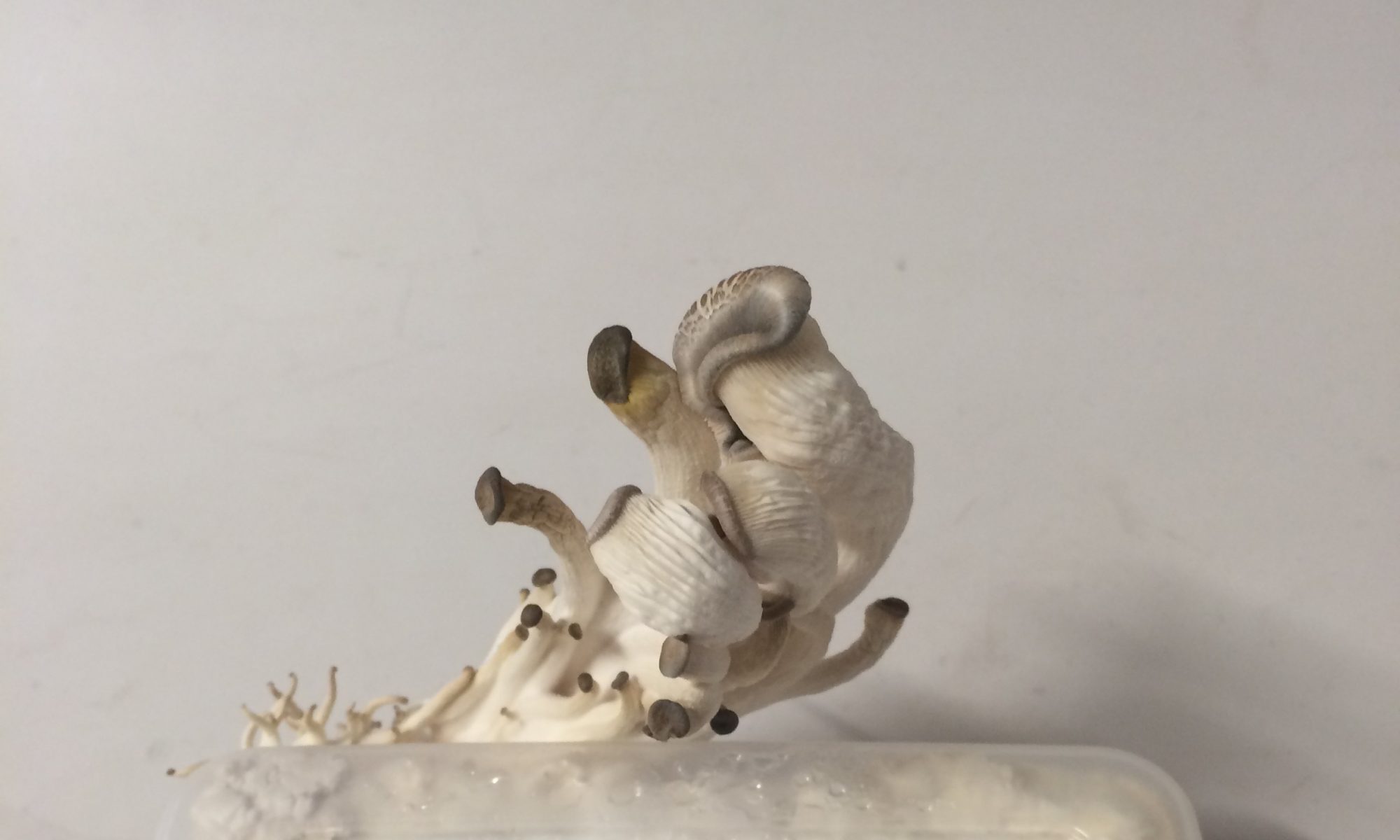Talking to Grant Burgess at the DOVE Marine Lab today about the defensive slime that bacteria produce, in order to keep from being decimated (by enemies, by antibiotics) reminded me of Alfonso Lingis’ description of the body as bodies, systems inside of systems, from his book “Dangerous Emotions”:
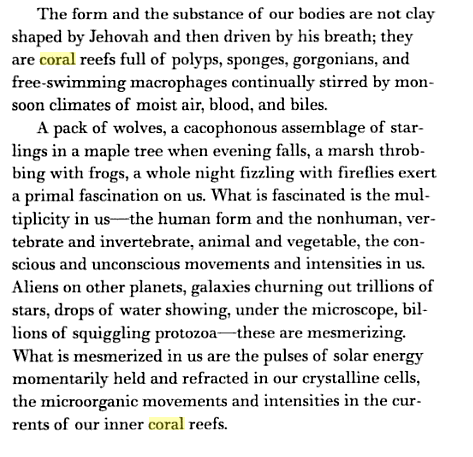
Kittiwakes in the nature/culture wars
This from the BBC/Tyne online
“The Kittiwake, a small seagull, could be driven off its nesting sites on the Tyne Bridge by Newcastle City Council.
The birds are at sea feeding on fish offal discarded by trawlers and when they return in the spring to nest they may find that the City Council has netted off their nesting sites on the Tyne bridge.They used to nest in the Baltic Flour Mills but have been driven off by the cultural aspirations of Gateshead. Gateshead Council provided a nesting tower but this has been moved down river.
The renovation of the Baltic Flour Mill on the Gateshead side of the Tyne took away access to a Kittiwake breeding site on Tyneside.
Now, in response to complaints from local residents about the mess and noise from Kittiwakes, Newcastle City Council is considering netting the Tyne Bridge to prevent nesting.. IIt is clear that the Bridge has become an important breeding site for these birds. Whilst there are of course much larger breeding colonies in the UK, the Tyne Bridge is the furthest inland breeding site for Kittiwakes in the world.


Cutifying cancer
The Newcastle Metro is plastered with appeals for oesophagal cancer using the ‘cute’ animal logo of the “oesophogoose:”

Grant Burgess, The DOVE Marine Laboratory
I had a tour, some lessons and an intense conversation with Grant Burgess, Director of the DOVE Marine Laboratory in Cullercoats, Northumberland (it’s part of Newcastle University’s Marine Biology Dept).
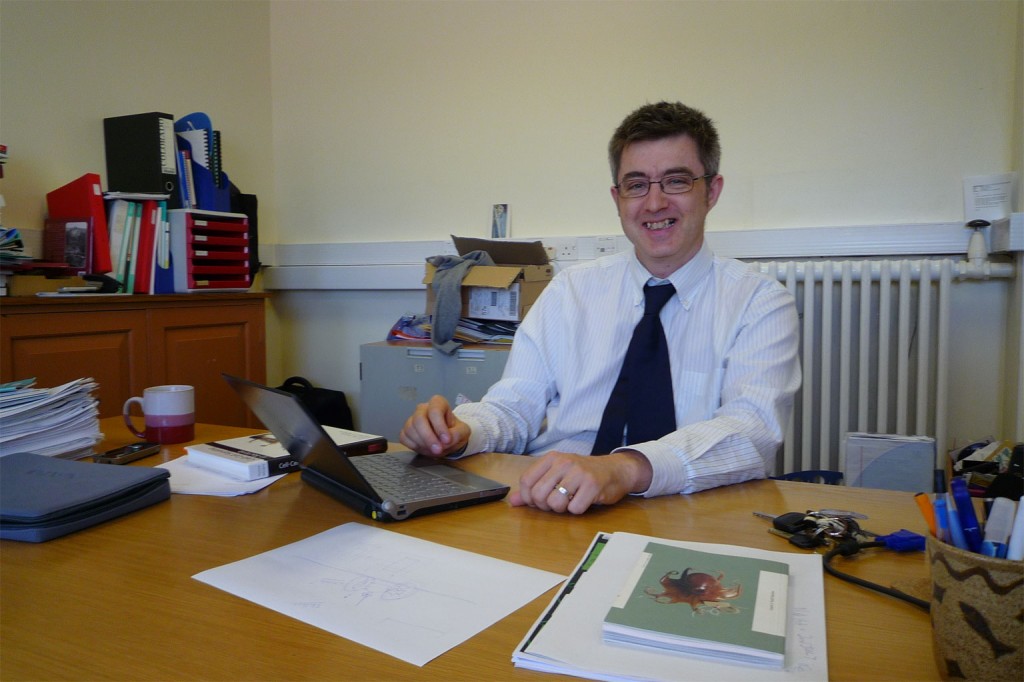
This is one of the few labs that has a steady supply of seawater pumped through the building’s plumbing. It flows through the lab taps!

I learned a bit about Anton Dohrn, who built the first Marine Station in Naples in the 1870’s, and actually implemented an art-science interface, by hosting concerts, and art events within the lab… Grant came to my talk at ISIS, and is clearly very open to the interplay of hard science, and the evocations that art can muster, measures to teach and incite…
Grant’s lab foci include: “Novel bioactive compounds from marine bacteria, chemical defense in marine microbes, antifouling compounds from marine bacteria, microbiology at high pressure, sponge microbiology, biofilms, and more recently marine fermentation and bioprocessing.”
In lay terms, he explained that the lab’s working on turning algae/fungus into an OMEGA 6 source, since we no longer have fish as a viable source for the nutrients; and using algae as an energy fuels. The lab also researches the medicinal potential of sea slugs, and ways to zap ballast water of invasive species. Among other things. I got a crash course in quorum sensing– the ways bacteria make language out of molecular signaling, in order to act in concert when a quorum is reached.
The lab’s growing algae on the roof ( even in winter in the limited sunlight) in these cheerful, workaday aquaria:

We took a tour through the remains of the Victorian era public aquarium, where we met a very curious plaice, who came right up to the window, very self-possessed and clearly eager. Am I anthropomorphizing? Is it useful? Can one attribute motivation without human descriptors, and attribute thoughtful agency to non-human animals?
We also had some very speculative conversations on invasive species – the embedded racism and selective designations inherent in the condemnatory term, and how the line is in slippery flux between “introduced” and “invasive.”
I like these hybrid spaces – of thinking, working, making.

The Ouseburn

I went for a walk with Laura Harrington, who is artist-in-residence at Environment Agency. We walked by the Ouseburn – a small river off the Tyne in a surprisingly quiet and neglected-seeming part of Newcastle not so far from the center, after driving with her in the EA’s funny little electric car.


This next pic is by someone on flickr – Paul J White – who calls Ouseburn “the cradle of the Industrial Revolution.” I bet some brief research would show this brownfields holdover as a pretty interesting ecosystem now.

Dead Moles in little dresses
- Artwork at Allenheads, “Exploring Nostalgia,” photo by Sharon Bailey
Crazy… Moles are traditionally nailed to fences – it’s a way of counting coupe so the molecatcher gets paid. More on this after I visit Allenheads Contemporary Arts (ACA), an arts centre in the moors of rural Northumberland.
Just for context, I looked into molecatchers and found this gent “Jeff Nicholls the GRASS SHARK HUNTER. ” Of course he’s in the Guild of British Molecatchers:
He’s written some eponymous books that have met with rave reviews — “Anyone who suffers from moles will find Jeff Nicholl’s Molecatcher a long awaited lifeline.”
But I haven’t found too many technical pics on his web site, except this one, tugs at the heart strings (especially after petting a very soft, dead mole at the taxidermy studio of Eric Morton):
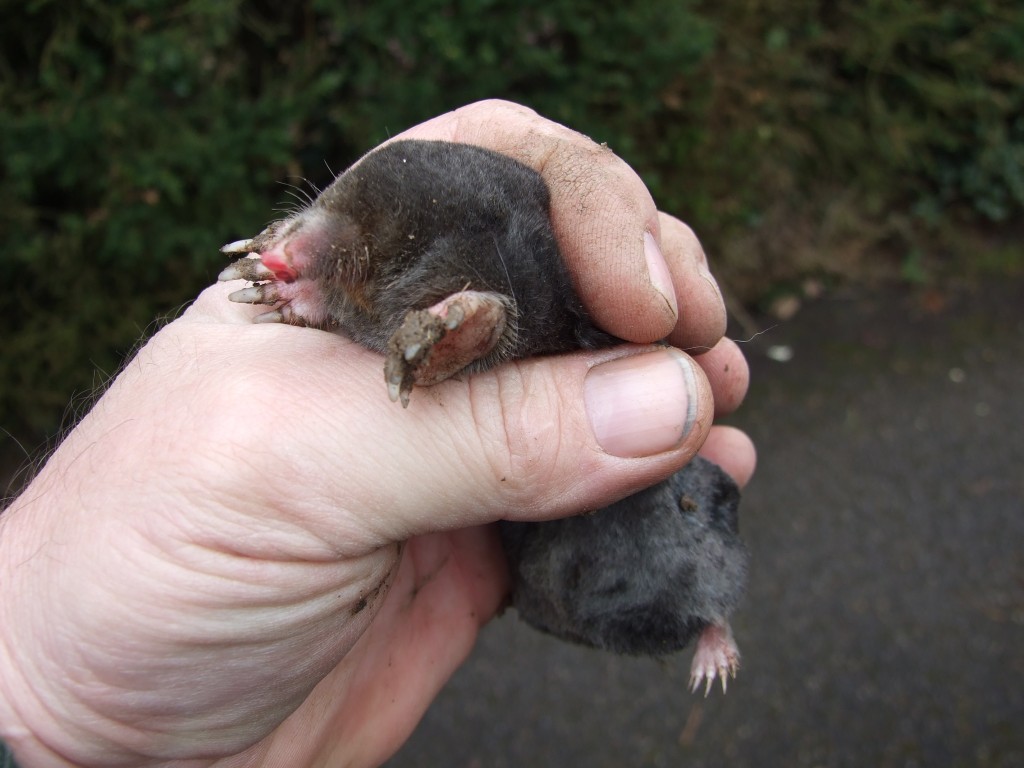
But this is what I was looking for:
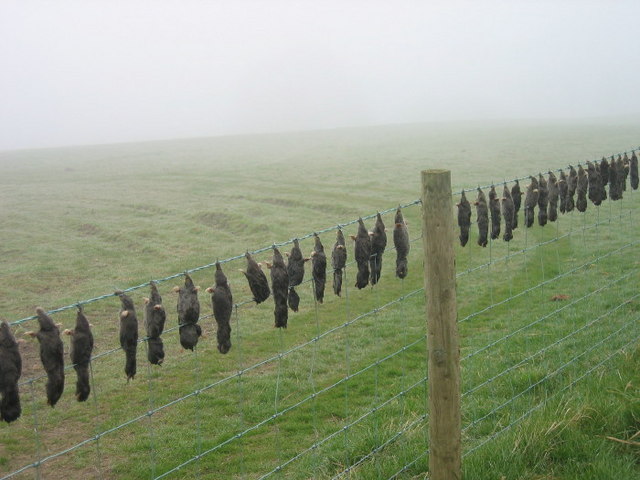
I’m of two minds about this – it’s traditional warfare between cultivator and cultivator; and it saddens me, to see them hung by their nosies.
